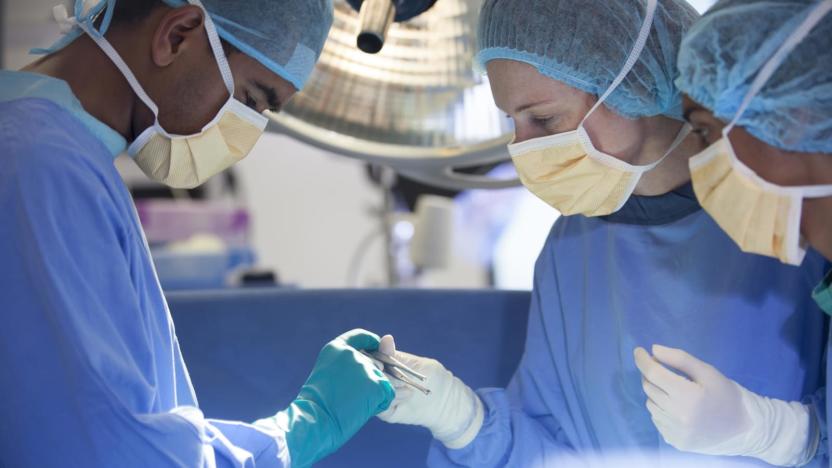HeartSurgery
Latest

Researchers create ultrasound needle for internal surgical images
Minimally invasive surgeries are appealing because they typically mean less scar tissue, shorter recovery times and a lower risk of infection. But they have their downsides as well. Getting a good look at the tissue being targeted during a minimally invasive surgery can be quite difficult, and often surgeons are limited to using external ultrasound probes and imaging scans taken prior to surgery. But new research published today in Light: Science & Applications presents a potential new option -- an optical ultrasound needle.

ICYMI: A soft robot sleeve to keep your heart going
try{document.getElementById("aol-cms-player-1").style.display="none";}catch(e){}Today on In Case You Missed It: A soft robotic device made by Harvard and Boston Children's Hospital researchers has been tested on pigs and so far, seems quite promising in treating heart disease. The robotic heart wraps around parts of existing tissue and helps squeeze, keeping the blood moving. But unlike other existing devices that are inserted into the heart, this just goes over the top. Its makers believe that will lead to better outcomes for patients that use it, since cycling blood through a medical device can lead to all kinds of complications, from infection to blood clots. No word yet on when they'll begin tests in humans.

Visualized: this motion compensated tool prototype will haunt your dreams
The Biorobotics lab at Harvard has interests extending beyond robot hands. The team is doing some fascinating stuff in the medical field, as well, including the exploration of heart surgery while the heart itself is still beating. They've explored some motion compensating tools, and we just couldn't take our eyes off of this one during our visit -- not exactly the last thing you want to see before they put you under. Part of the reason the device is so large is due to the weighted motion compensating system built in making it look like the sort of tool they'd use if they ever needed to perform open heart surgery during Blade Runner.


